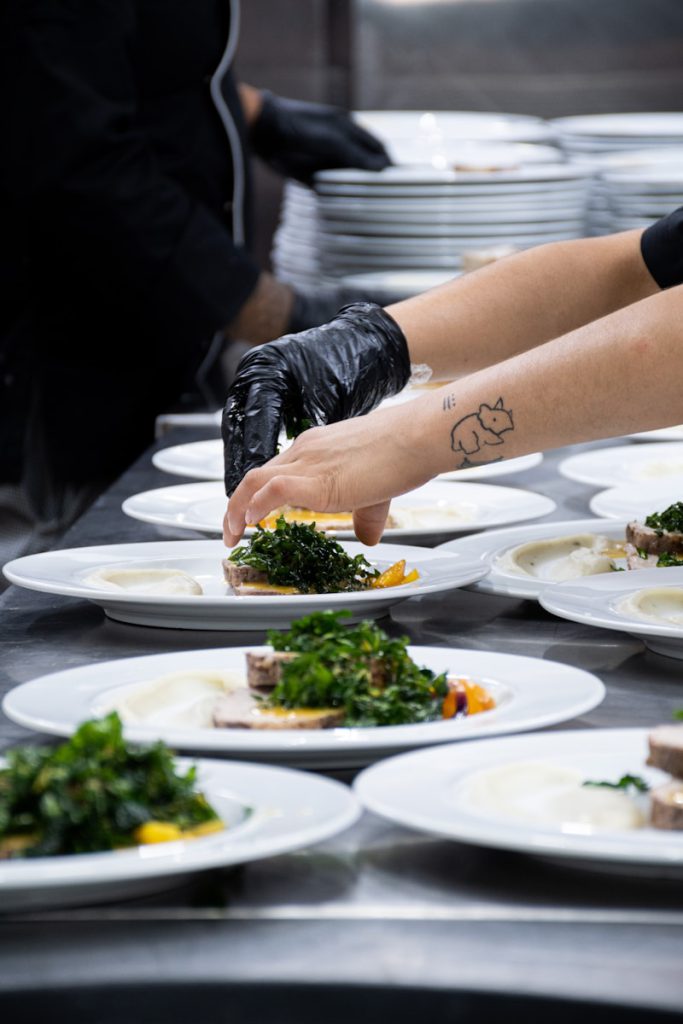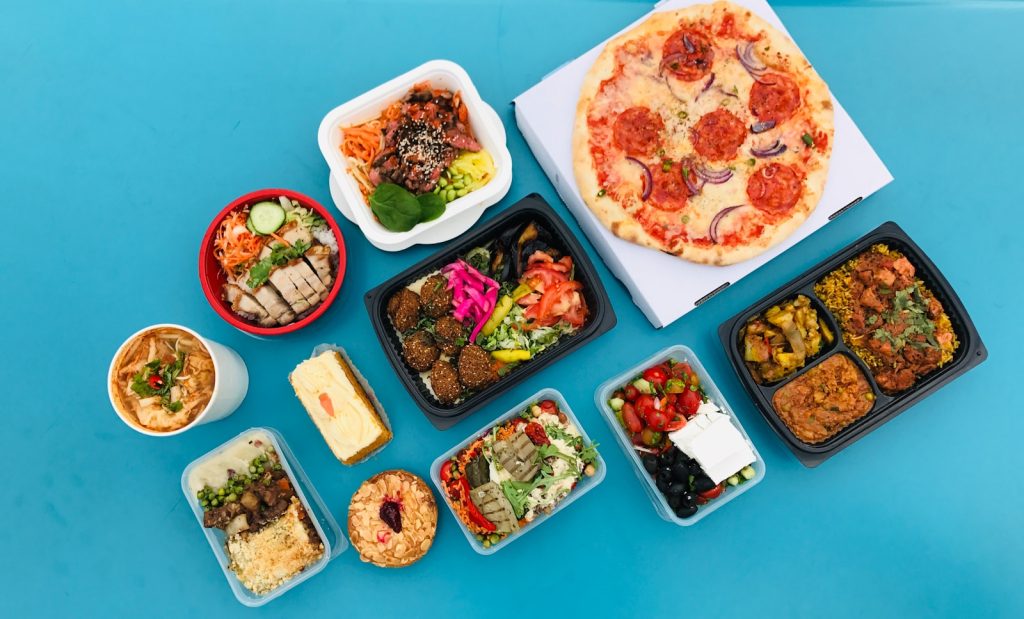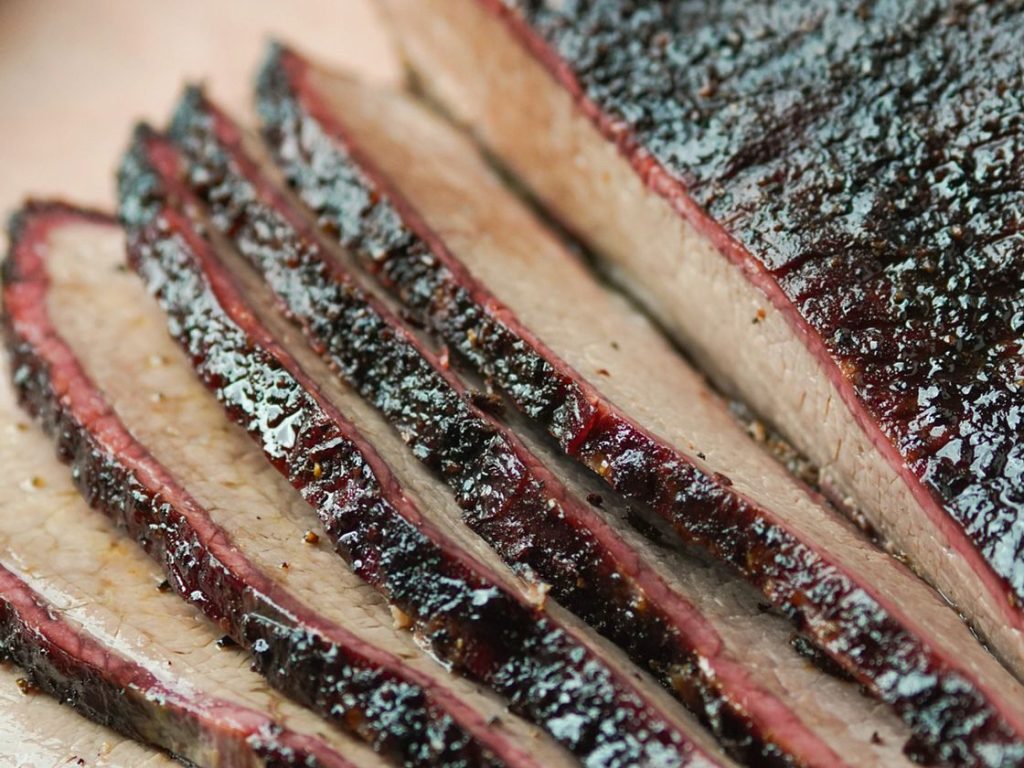Accommodating dietary restrictions shows thoughtfulness and contributes to a positive atmosphere where everyone can relax, celebrate, and enjoy the any wedding or party feast. With growing awareness of allergies and dietary needs, creating a wedding menu that caters to everyone is no longer optional. It’s a thoughtful gesture that ensures all guests feel welcome and comfortable during the celebratory meal. A truly inclusive dining experience fosters a positive atmosphere, allowing everyone to fully enjoy the festivities and focus on celebrating the happy couple.
Understanding Dietary Restrictions and Allergies
- Common Dietary Restrictions: Vegetarian (excludes meat, poultry, and fish), Vegan (excludes all animal products, including dairy and eggs), Gluten-free (avoids wheat, barley, and rye due to celiac disease or gluten sensitivity), Nut-free (essential for those with potentially life-threatening nut allergies), Dairy-free (may be due to lactose intolerance or a dairy allergy).
Professional event caterers Understand the reasons behind these restrictions and know that it is essential to Accommodate Dietary Restrictions. Vegetarians and vegans may choose this lifestyle for ethical, health, or environmental reasons. Gluten-free and dairy-free diets are often medically necessary to manage health conditions.
Health-Related Dietary Restrictions
Health-related dietary restrictions, such as gluten intolerance and lactose intolerance, are essential considerations for many individuals. These restrictions are often necessary due to specific medical conditions that impact how the body processes certain foods. For instance, people with celiac disease or gluten intolerance must avoid gluten-containing foods, while those with lactose intolerance need to limit or eliminate lactose from their diet.
Gluten Intolerance and Celiac Disease
Celiac Disease: This autoimmune disorder affects about 1% of the global population. When people with celiac disease consume gluten—a protein found in wheat, barley, and rye—their immune system attacks the lining of the small intestine, leading to malabsorption of nutrients, abdominal pain, diarrhea, and other symptoms. Managing celiac disease requires a strict gluten-free diet, avoiding all foods that contain gluten.
Non-Celiac Gluten Sensitivity: Unlike celiac disease, non-celiac gluten sensitivity does not cause intestinal damage but can still result in symptoms like bloating, diarrhea, and fatigue. Managing this condition also involves adhering to a gluten-free diet, but it may be less strict than for those with celiac disease.

Gluten-Free Alternatives: To accommodate gluten intolerance, consider offering the following alternatives:
- Grains: Rice, quinoa, millet, and corn.
- Flours: Almond flour, coconut flour, and gluten-free all-purpose flour.
- Snacks: Rice cakes, gluten-free crackers, and popcorn.
Pros and Cons of a Gluten-Free Diet:
| Pros | Cons |
|---|---|
| May alleviate symptoms of gluten intolerance | Can be challenging to maintain |
| Often involves healthier eating habits | Gluten-free products can be expensive |
| Increasing availability of gluten-free options | Risk of nutrient deficiencies (e.g., fiber) |
Lactose Intolerance
Lactose Intolerance: This common condition affects up to 65% of the global population to varying degrees. It occurs due to a deficiency in lactase, the enzyme needed to digest lactose, the sugar in milk and dairy products. Symptoms include bloating, diarrhea, and stomach cramps.
Managing Lactose Intolerance:
- Lactose-Free Products: Use lactose-free milk, cheese, and yogurt.
- Dairy Substitutes: Almond milk, soy milk, and coconut milk.
- Enzyme Supplements: Lactase supplements can help digest lactose-containing foods.
Dairy-Free Alternatives:
- Milk: Almond milk, soy milk, oat milk.
- Cheese: Nut-based cheeses, soy cheese.
- Ice Cream: Coconut milk ice cream, sorbet.
Pros and Cons of Lactose-Free Diet:
| Pros | Cons |
|---|---|
| Reduces digestive discomfort | Limited dairy-free options in some areas |
| Often leads to healthier dietary choices | Can be more expensive than regular dairy |
| Variety of dairy-free products available | May require careful label reading |

Practical Tips for Everyday Management
- Meal Planning: Plan meals ahead to ensure they meet dietary restrictions. For instance, a weekly plan might include gluten-free grains and dairy-free proteins.
- Reading Labels: Learn to read food labels carefully to avoid gluten and lactose. Ingredients like “modified food starch” and “whey” can indicate the presence of gluten and lactose, respectively.
- Cooking Alternatives: Experiment with gluten-free and lactose-free recipes. For example, using almond flour in baking or coconut milk in curries can be effective substitutes.
Example
A popular Gold Coast restaurant offers a comprehensive gluten-free menu, including dishes like quinoa salad and gluten-free pasta. They also provide lactose-free options such as almond milk lattes and dairy-free desserts, ensuring that guests with dietary restrictions can enjoy a diverse and satisfying meal.
Food Allergies
Food allergies can pose severe health risks and require strict avoidance of allergenic foods. Common food allergies include peanut, tree nut, dairy, egg, fish, shellfish, soy, and wheat allergies.
Common Food Allergies
Peanut and Tree Nut Allergies: These allergies are among the most common and can cause severe reactions, including anaphylaxis. Avoiding nuts and products containing nuts is crucial.
Dairy Allergy: Different from lactose intolerance, a dairy allergy involves an immune reaction to milk proteins like casein and whey. Symptoms can range from mild (hives, stomach upset) to severe (anaphylaxis).
Egg Allergy: Often seen in children, egg allergies can cause symptoms such as skin reactions, respiratory issues, and digestive problems. Baked goods and some sauces may contain hidden eggs.
Fish and Shellfish Allergies: Common in adults, these allergies can cause severe reactions. It’s essential to avoid cross-contamination with other foods.
Managing Food Allergies
- Avoidance: Strictly avoid allergenic foods and products containing them.
- Substitutes: Use allergen-free substitutes like seed butters for nut allergies or egg replacers for egg allergies.
- Emergency Preparedness: Individuals with severe allergies should carry an epinephrine auto-injector (e.g., EpiPen) and be aware of how to use it.
Accommodating Multiple Food Allergies:
- Communication: Clearly communicate with guests about their allergies.
- Labeling: Label foods with potential allergens, especially in buffet settings.
- Separate Preparation Areas: Use dedicated utensils and preparation areas to avoid cross-contamination.
Pros and Cons of Allergy Management:
| Pros | Cons |
|---|---|
| Prevents severe allergic reactions | Requires careful planning and diligence |
| Enhances safety and inclusivity | Can limit food choices for some individuals |
| Encourages healthy, whole-food eating | May increase meal preparation time |
Example
A Brisbane catering service specializes in allergy-friendly menus, offering nut-free, dairy-free, and gluten-free options. They ensure all staff are trained in handling food allergies and use separate preparation areas to prevent cross-contamination.
Ethical and Environmental Considerations
Many individuals choose dietary restrictions based on ethical or environmental concerns, such as veganism and vegetarianism.
Veganism and Vegetarianism
Veganism: Vegans abstain from all animal products, including meat, dairy, eggs, and honey, due to ethical reasons related to animal welfare and environmental sustainability.
Vegetarianism: Vegetarians avoid meat but may consume dairy and eggs. There are variations, such as lacto-vegetarians (who consume dairy but not eggs) and ovo-vegetarians (who consume eggs but not dairy).
Benefits of Vegan and Vegetarian Diets:
- Health: These diets are often rich in fruits, vegetables, and whole grains, leading to better overall health.
- Environment: Reducing animal product consumption can lower greenhouse gas emissions and decrease the environmental footprint.
- Ethical: Avoiding animal products aligns with the ethical beliefs of reducing animal suffering.

Practical Tips for Ethical Eating
- Plant-Based Proteins: Use beans, lentils, tofu, and seitan as protein sources.
- Dairy Alternatives: Almond milk, soy milk, and nut-based cheeses.
- Egg Replacers: Use chia seeds, flaxseeds, or commercial egg replacers in baking.
Pros and Cons of Plant-Based Diets:
| Pros | Cons |
|---|---|
| Often lower in saturated fats | Requires careful planning to meet nutrient needs |
| High in fiber and antioxidants | May need supplements (e.g., B12) |
| Reduces environmental impact | Can be socially challenging in certain settings |
Example
A Gold Coast vegan cafe offers an entirely plant-based menu, including dishes like tofu scramble, lentil burgers, and almond milk smoothies. They also focus on sourcing locally and sustainably grown produce to minimize their environmental impact.
Religious and Cultural Practices
Dietary rules based on religious or cultural practices are essential for many individuals. Understanding these practices is crucial for inclusive and respectful meal planning.
Halal and Kosher Diets
Halal: Muslims follow halal dietary laws, which prohibit the consumption of pork and alcohol. Slow cooked or grilled BBQ Meat Packages must be slaughtered according to specific religious guidelines.
Kosher: Jews follow kosher dietary laws, which include prohibitions against mixing meat and dairy, consuming pork, and eating shellfish. Kosher food must be prepared according to Jewish law.
Vegetarianism in Hinduism and Buddhism: Many Hindus and Buddhists follow vegetarian diets, avoiding meat and, in some cases, eggs and dairy.
Accommodating Religious Dietary Needs:
- Halal: Offer halal-certified meats and avoid pork and alcohol.
- Kosher: Ensure separation of meat and dairy and use kosher-certified ingredients.
- Vegetarian Options: Provide a variety of vegetarian dishes to accommodate Hindu and Buddhist practices.
Pros and Cons of Religious Dietary Practices:
| Pros | Cons |
|---|---|
| Promotes adherence to religious beliefs | Can be restrictive in mixed settings |
| Encourages healthy and mindful eating | May require special sourcing and preparation |
| Enhances cultural and spiritual connection | Limited availability of certain foods |
Example
A Brisbane catering service offers specialized menus for religious events, including halal and kosher options. They collaborate with certified suppliers and train their staff in religious dietary laws to ensure compliance and respect for guests’ needs.
Managing Multiple Dietary Needs
When hosting events or serving diverse groups, accommodating multiple dietary restrictions is essential for inclusivity and guest satisfaction.
Tips for Hosting Events
- Communication: Ask guests about their dietary needs in advance.
- Labeling: Clearly label dishes with potential allergens and dietary information.
- Variety: Understanding and Managing Common Dietary Restrictions and Preferences
Managing dietary restrictions and preferences is crucial for ensuring that everyone can enjoy meals safely and comfortably. This article covers various health-related dietary restrictions, food allergies, ethical considerations, and cultural practices. It provides practical tips, alternatives, and real-world examples to help caterers, event planners, and individuals accommodate diverse dietary needs.
Navigating Dietary Needs: 10 Common Restrictions Explained
Food catering is all about creating a delightful culinary experience for your guests. However, with the growing awareness of dietary needs and allergies, it’s important to understand the various restrictions some guests may have. Here’s a breakdown of 10 common dietary restrictions to help you cater to a diverse crowd:
- Vegetarian: This encompasses individuals who abstain from meat, poultry, and fish. There are further variations within vegetarianism:
- Lacto-ovo vegetarians include dairy and eggs in their diet.
- Lacto vegetarians consume dairy products but exclude eggs.
- Ovo vegetarians include eggs but avoid dairy.
- Vegan: Vegans exclude all animal products from their diet, including meat, poultry, fish, dairy, eggs, and honey. Their diet focuses on plant-based foods like fruits, vegetables, legumes, grains, nuts, and seeds.
- Gluten-free: This diet is essential for individuals with celiac disease or gluten sensitivity. Gluten is a protein found in wheat, barley, and rye. Consuming gluten can cause digestive issues and other health problems for those with this restriction.
- Nut-free: This restriction is crucial for people with nut allergies, which can be life-threatening. It involves avoiding all types of nuts (peanuts, almonds, cashews, walnuts, etc.) and sometimes even nut-based products like nut butter or nut oils.
- Soy-free: This diet excludes soy and soy-based products due to allergies or intolerances. Soy is a common ingredient in many processed foods, so careful reading of labels is necessary.
- Dairy-free: People with lactose intolerance or a dairy allergy may need to avoid dairy products like milk, cheese, yogurt, and butter. Lactose intolerance is a digestive issue caused by the inability to properly digest lactose, a sugar found in milk.
- Egg-free: This restriction excludes eggs and egg products due to allergies or ethical reasons. Eggs are a common ingredient in baked goods, so finding egg substitutes is crucial for those with this restriction.
- Pescatarian: Pescatarians include fish and seafood in their diet but abstain from meat and poultry. This can be a good option for guests who want to limit red meat intake but still enjoy some animal protein.
- FODMAP-free: This diet focuses on eliminating certain short-chain carbohydrates (FODMAPs) that can trigger digestive problems in some individuals. It’s important to note that this is a therapeutic diet and should be followed under the guidance of a healthcare professional.
- Ketogenic: The keto diet is a high-fat, low-carbohydrate diet that forces the body to use fat for energy instead of glucose. This can be helpful for weight management or certain medical conditions, but it’s crucial to consult with a doctor before embarking on this dietary approach.

The Importance of knowing your Guests preference
When responding to a wedding invitation, it’s crucial for guests to clearly communicate any dietary restrictions on the RSVP card. The more specific the details, the better. For example, a guest who identifies as vegetarian might specify “lacto-ovo” (includes dairy and eggs) or “pescatarian” (includes fish). Similarly, guests with allergies should mention the severity (trace amounts vs. complete avoidance) to help the caterer take appropriate precautions.
If a dietary restriction arises after the RSVP deadline, it’s important for the guest to inform the couple as soon as possible. While caterers are often flexible, last-minute changes can be challenging to accommodate, especially for complex restrictions.
The Role of the Caterer: Creating a Menu for All
- Communication is Key: Clear communication between the caterer and the couple regarding guest restrictions is essential. The couple should provide a list of guests with dietary needs and any specific requests they may have.
- Menu Planning for Inclusivity: Caterers can create a base menu with options for customization. This allows guests with some restrictions to still enjoy the main course with a minor modification. For example, a vegetarian entree could be offered with a vegan protein alternative upon request.
- Variety is Key: In addition to the main menu, including a variety of naturally gluten-free and dairy-free dishes allows guests with these restrictions to enjoy a delicious meal without needing special requests. This could include options like grilled fish, vegetable stir-fries, or naturally gluten-free grains like quinoa. Highlighting dishes that are suitable for specific restrictions on the menu or through signage at the reception makes it easier for guests to find appropriate options.
Safe Preparation and Presentation
- Preventing Cross-Contamination: For allergies, especially severe ones where even trace amounts can cause reactions, separate stations or dedicated cooking areas are crucial to avoid cross-contamination. This means using separate utensils, cooking surfaces, and even preparing dishes at different times to minimize the risk of allergens coming into contact with food meant to be allergen-free.
- Staff Training: Caterers should train their staff on handling allergens and identifying ingredients. This includes understanding food labels and potential hidden allergens in processed foods. Staff should also be aware of the severity of different allergies and the importance of following protocols to ensure guest safety.
- Clear Labeling: Clearly labeling all dishes with a list of allergens they contain is essential. This information should be presented in a clear and easy-to-understand format, separate from the dish description, to avoid confusion for guests with allergies.
In Queensland, Australia, food safety regulations for caterers are a joint responsibility of QLD Health and local governments. Here’s a breakdown of the key standards and rules that QLD caterers must follow regarding dietary restrictions and allergies:
Food Act 2006 (QLD): This is the main legislation governing food safety in Queensland. It outlines the objectives of ensuring food safety and suitability for consumption, preventing misleading conduct in food sales, and adhering to the Australia New Zealand Food Standards Code.
Food Standards Code: This code sets national standards for food safety and labeling. It includes specific requirements for allergen labeling, ensuring clear and consistent information for consumers with allergies.
Food Regulation 2016 (QLD): This regulation details specific requirements for licensed food businesses in Queensland. It doesn’t directly address dietary restrictions, but it emphasizes the importance of proper labeling and information disclosure.
Food Safety Supervisor: Queensland mandates that all licensed food businesses have a designated Food Safety Supervisor who is reasonably available to staff. This supervisor plays a crucial role in ensuring food safety practices and staff training.
Training Requirements: QLD Health emphasizes the importance of food safety training for food handlers, including those who work for catering businesses. This training covers safe food handling practices, foodborne illness prevention, cleaning and sanitation procedures, and personal hygiene. While the training doesn’t specifically focus on dietary restrictions, it equips staff with the knowledge to handle food safely and minimize the risk of contamination.
Allergen Management: The best practices and industry standards emphasize clear communication and allergen management. This might involve:
- Working with couples to understand guest dietary needs.
- Implementing procedures to minimize cross-contamination, especially for allergies.
- Staff training on allergen identification and handling.
- Clear labeling of dishes with a list of allergens they contain.
Local Council Requirements: In addition to the state-wide regulations, some local councils in Queensland may have additional licensing requirements or guidelines for caterers. It’s advisable for caterers to check with their local council to ensure they are compliant with all relevant regulations.pen_spark
Additional Tips for a Seamless Experience
- Pre-wedding Tasting: For guests with severe allergies, a pre-wedding tasting can provide peace of mind. This allows the caterer to demonstrate how the dish will be prepared and ensures it meets the guest’s specific needs. Any adjustments can be made before the engagement day.
- Kids Menu Considerations: Offering kids friendly menu with simpler options can naturally cater to some restrictions. Consider items like gluten-free pasta dishes, dairy-free desserts, or grilled chicken with steamed vegetables.
- A Dedicated Point Person: On the event day, designate a point person on the catering team to address guest inquiries about dietary restrictions. This person should be knowledgeable about the menu and prepared to answer questions or direct guests to suitable options. This demonstrates a commitment to guest comfort and ensures a smooth dining experience for everyone.
By following these steps, food caterers can create a menu that is not only delicious but also inclusive.
References:



